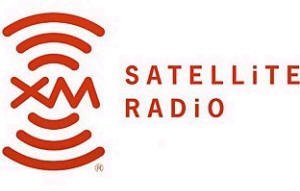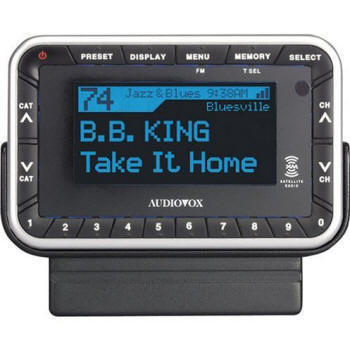|
You are reading the older HTML site
Positive Feedback
ISSUE
27
XM
Satellite Radio and the Audiovox XCS9 Tuner
Short attention spans must run in my family. For example, my father would rather watch a movie on TV—even with commercials—before he will slip in the DVD. He just cannot commit to any form of home entertainment for 90 minutes. It is the same with me. My Rega Planet sometimes gathers dust because I prefer being able to skip around from disc to disc on my inferior-sounding Denon DVD changer. Seems like satellite radio would be the perfect solution for a person like me, right? Trouble is I had no one to ask for advice. If my circle of contacts is any indication, audiophiles have avoided satellite radio in droves. I know a few people who use it in their cars, but mostly because they like talk radio. Still, the prices are right, so I gave it a shot. I compared XM Radio to Sirius and, according to XM's website; they offer deeper playlists and more channels. Since everything you read on the internet is true, I went with XM.
Decision made, I headed off to Circuit City last December, where a saleschild immediately suggested the Polk Audio XRT12 tuner. It is a beautiful product, thoughtfully designed, well built and easy to interface. It is also around $250 before rebates. I simply was not willing to gamble that much on a technology I would never heard in my own home. Instead, I found the Audiovox XCS9 on sale for around $80. The kit included a receiver, car dock, and antenna. For an extra $30, I purchased a home dock and full-size antenna. A $50 rebate knocked my total down to about $60 before tax. Unpacking the tuner, I was impressed by its chunky build quality. It looks and feels very nice for the money. It features a large blue-tinted screen that is easy to read, though for some reason, the matte black border around mine was marred with smear marks. It looked like they applied the protective plastic cover before the paint was dry. A small, light, and chintzy remote control is included, and that was my biggest source of disappointment. Even in the car, the remote is the easiest way to control the main unit, and this one does not feel like it will last very long. The XCS9 tuner plugs into a dock that includes outputs for power (a wall wart is provided), antenna (terminated to a proprietary plug) and audio (a 3.5mm stereo mini jack). The provided audio cable was predictably awful, so I headed to Radio Shack and purchased a 3.5mm-to-RCA stereo adapter so I could use the overachieving Audio Art IC3 interconnect. My next step was to aim the antenna—a very Mork-like exercise that requires establishing initial contact with the XM mothership. As satellite radio providers are quick to point out, you will need a clear shot at the satellite. In Pennsylvania, that means the south sky. Unfortunately, my listening room is on the north side of the house. (Shazbat!) I called the nice folks at XM and they suggested purchasing either an obscenely overpriced extension cord for the antenna that I could trip over every morning on my way to the bathroom, or an even more expensive system of repeater antennas that cost more than the tuner itself. I passed. Instead, I pointed that little antenna straight up to my ceiling and, after some fidgeting; I was able to find a signal (though maintaining that signal required periodic re-aiming). The Audiovox's setup menu offers a signal strength meter similar to what you would find on a cell phone. On the left side of the screen is a meter for dialing in reception from XM's repeater antennas in urban areas. On the right, a set of bars for aiming your home antenna at the satellite. Three bars out of six were the best I could manage, but with satellite radio, you are receiving a signal or not—there is no middle ground. Locking onto a less obstructed signal only guarantees fewer dropouts when, for example, someone walks in front of the antenna. Ordering service was far simpler. I logged onto XM's website and within 20 minutes was up and running. The standard activation fee of $12.95 was reduced to $9.95 because I ordered online. I elected to pay $12.95 per month rather than take advantage of discounts offered to those who purchase service in blocks of one year or more. I sat down to listen, and I have to admit, I was excited. Where to start? I settled on a channel that plays nothing but movie soundtrack selections interspersed with film clips and promos for upcoming releases. I listened to some selections from "Syriana", "The Empire Strikes Back" and "Men In Black". First impressions of XM's sound quality were generally lukewarm. Dynamic range was greater than what I am accustomed to with FM radio in my area and the sound was satisfyingly rich, but it was also heavily veiled from an audiophile's point of view. As I cruised through a set of dance music channels, I also noticed that low bass could sound stunted at the very bottom of the range, and was subject to a kind of crackly breakup as though it were being played through an overstressed boom box. Jazz and classical music fared the best, particularly through the midrange, where vocals and instruments were smooth, well focused and distinct. Soundstage width and depth, in my subjective listening tests, were virtually nonexistent. Music tended to cluster around the speakers, never delivering a convincing center fill. This was not CD-quality sound by any stretch of the imagination, but it was more than good enough for casual listening and its shortcomings are easily forgiven when discovering new music, which the XM service had plenty of. I found myself jotting down reminder after reminder for CDs I wanted to purchase. That's the rub. The XM service whets my appetite for music, but always sent me running for my LPs and CDs. When you have a large music collection—as do most audiophiles—it is easy to program a night of music without turning to satellite radio. I also spent a lot of time skipping from channel to channel instead of settling down for the night. Short attention span? I suppose. In the car however, XM radio might be just the ticket—but only if it is built into the factory head unit. Like nearly all of the portable XM receivers I have seen, Audiovox XCS9 is a clumsy unit. The tuner itself is bulky, as is the car dock, which must be glued or screwed into the dashboard (great for the resale value). One wire goes to your cigarette lighter for power; another wire must be routed out the widow or through your trunk to the antenna, which is magnetized for adhesion to a car's sheet metal. I quickly came to understand what it must feel like to be a meatball in a bowl of spaghetti. Not only are there many wires to hide, the antenna itself can be blown off the roof in a car wash tunnel or when clearing snow on a cold winter morning. If it does come loose, you will likely leave a nice big scratch across your finish. In fairness, you can elect to take apart your car's interior trim and hide a lot of the wiring if you are so inclined. In fact, a friend of mine hired his local car audio dealer to do just that with his Audi TT Cabriolet. For around $200, they hardwired the unit into the factory stereo system, found a permanent home for the antenna and even hid the receiver in the car's ashtray, which has the added benefit of concealing it from the kind of dirt bag who would slice through a convertible top to steal it. Another problem was the XCS9's FM modulator. It allows you only a limited bandwidth that ranges from 88.1 to 89.9 and 107.1 to 107.9. In my area, they are occupied almost completely by college radio stations, so I never was able to find an interference-free channel to broadcast the XM signal through. I suppose I could have purchased a cassette adaptor, but that would take me back to the 1980s when I was running a Sony Discman through the cassette deck on my mother's brown Chevy Celebrity Eurosport …dark days I'd prefer not to revisit. Overall, I found XM satellite radio is a mixed bag. It offers good programming, acceptable audio quality and a lot of fun once you get past the hassles of antenna aiming—so it is with the Audiovox XCS9 tuner. It is good looking, well made, and has a nice-sized display. It is just too small and fidgety for home use, and too large and bulky for the car. The Polk Audio tuner probably would have been a better fit for my listening preferences by virtue of its purportedly superior sound quality and component-size chassis. In the end, it was back to Circuit City, where I said nanu-nanu to the Audiovox XCS9 in exchange for store credit. This, come to think of it, may say more about my short attention span than the unit itself may.
|


